‘Round the Corner, Marmalade
I don’t care for marmalade. I’m sorry. If you’d like to read an article about developing an enjoyment for marmalade, along with a lot of small fascinating details about growing up in Australia, may I recommend Crit’s excellent recent post? Go on ahead and read that one instead, you won’t hurt my feelings.
So as I was saying, I don’t really like marmalade. And the thing that gets me is, it doesn’t make sense that I don’t like marmalade. I enjoy bitter flavors–I drink my coffee black as often as not, my tea strong and unsweetened. I like absinthe, and Italian amari, and I even like Jeppson’s Malört. Nobody likes Jeppson’s Malört.
So I like bitter flavors, I like citrus flavors, I enjoy fruit jams–marmalade should be right in my sweet spot, right? But it’s not. I took several runs at it this month and mostly came up empty, though I eventually did find a particular case in which I liked it.
Attempt #1: Unbearable
I saw it in the store almost immediately this month–Signature Select (a Jewel/Osco store brand) “Like Homemade” Red Grapefruit Marmalade and I thought: why not? Grapefruit is not my favorite of the citruses but hey, I’m a grown-ass man and it’s been a long time since I’ve had it. I even like the “Pamplemousse” flavor of La Croix now. Maybe I have developed an adult palate? So I bought this red grapefruit marmalade.
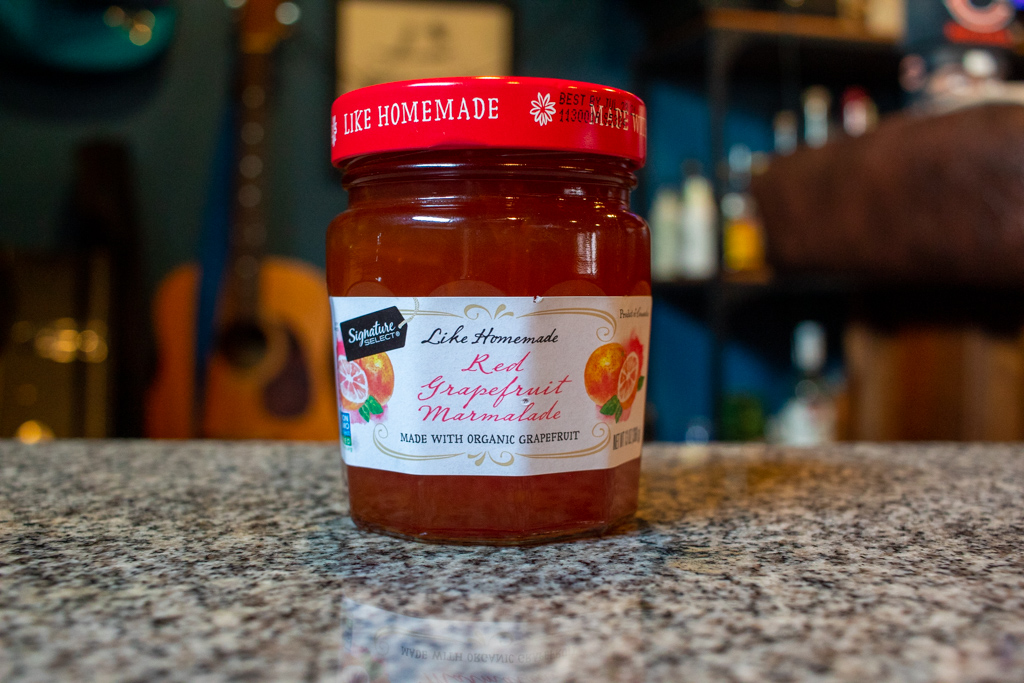
I started with squishy white bread–Perhaps something browner with seeds and such in it would be a more adult choice but I have watched both Paddington movies in their entirety this month and in general the bread that little bear uses seems fairly light-colored (don’t ask me how he came by squishy white bread in darkest Peru).
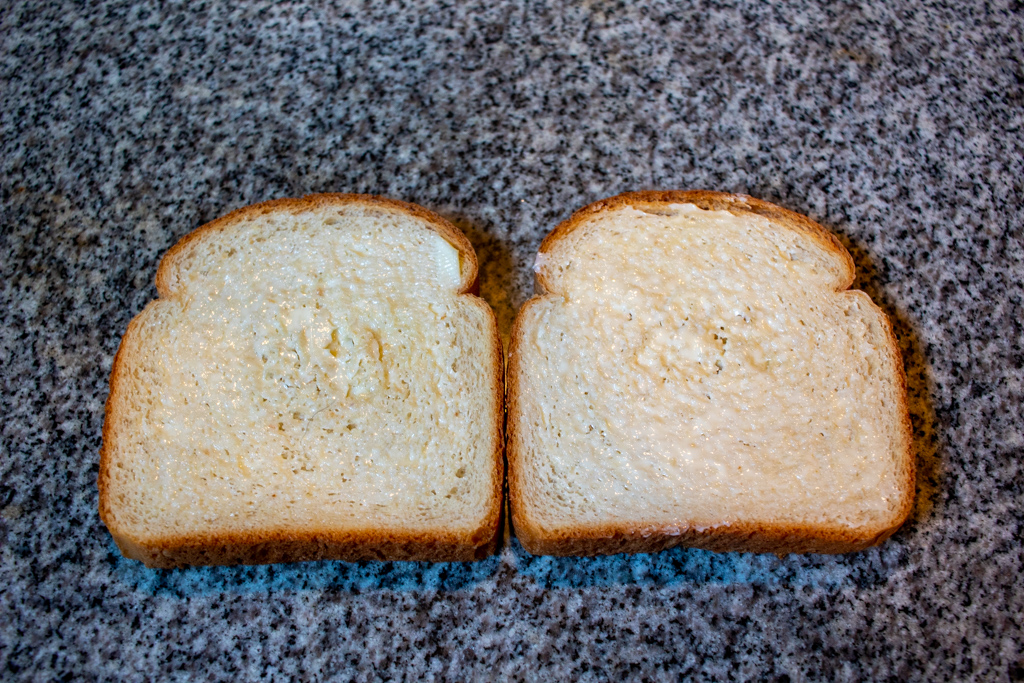
I buttered the bread, obviously, because that is what you do when you are making a British sandwich. Then I added the marmalade.

The red grapefruit marmalade was not set too hard and was nicely spreadable with a bright reddish orange color. It really looked quite nice. Then of course, I assembled the sandwich, cut off the crusts, and cut it into triangles.
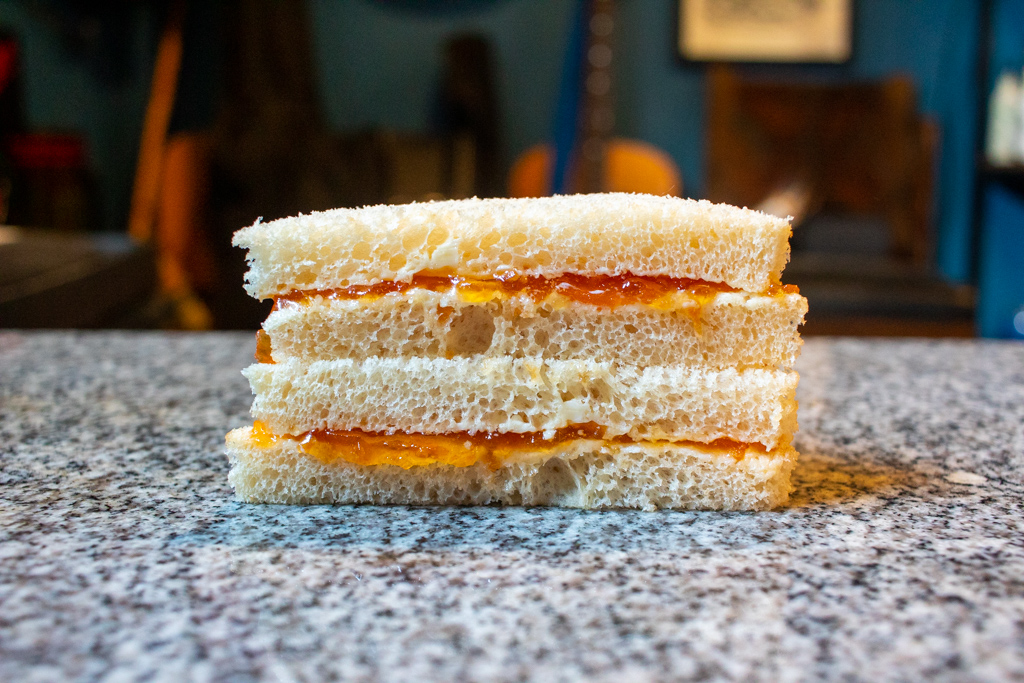
Why did I cut off the crusts? Looking back at the Paddington source material, the marmalade sandwiches in the movies did not always seem to have their crusts cut off, nor was there any canonical reference to the relative squishiness of the bread. However, in the prison scene in Paddington 2, Paddington does definitively describe the marmalade as being served on bread that is warm and crustless.
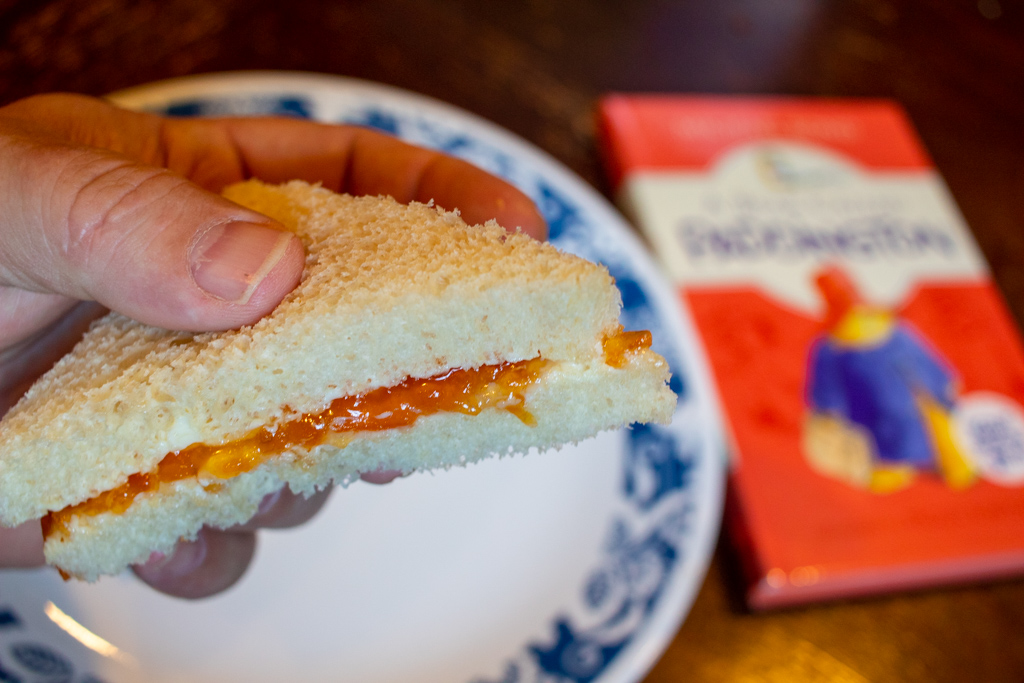
In any case, crusts certainly would not have helped, nor would a firmer, tastier bread. The grapefruit marmalade was quite bitter, and after a few bites I offered the remainder of the jar to my eldest, Damian, who is a fan of grapefruit. I will stick to La Croix.
Attempt #2: Beautiful Disaster
A few months ago when I was running around the South Side with Peter Engler after Jim Shoes, we stopped by an AfroCaribbean market called La Fruteria on a whim. Peter happened to mention while we were there that it was the only place in town he knew of where you could consistently get Seville oranges. Seville oranges, it seems, are the traditionally preferred fruit for marmalade, but are also frequently used in Latin preparations such as Cuban mojo or the bright orange achiote-based marinade for cochinita pibil. They also are in season during the winter, so when you look for them in July they can be hard to find as they themselves are not necessarily… orange. Fair warning.
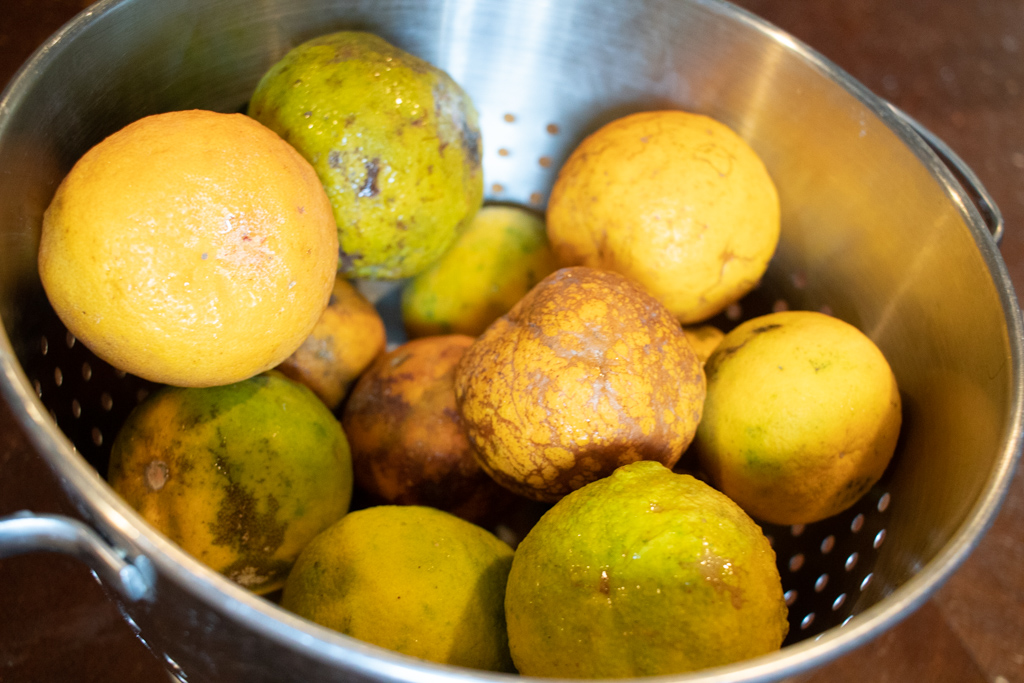
Having read a number of marmalade recipes, I finally settled on the “perfect” marmalade recipe as described by an article in The Guardian. Along with some additional instruction on technique provided by this Youtube video, I peeled my oranges and sliced them into slivers, trying to shave off excess pith where I found it.




After peeling, I squeezed the oranges through a cheesecloth bag-lined colander and into the pot I’d be using to make the marmalade. The remaining flesh and pips of the oranges stayed in the bag, to simmer along with the juice and peels.


After a couple of hours of simmering, pectin just oozed out through the cheesecloth when squeezed.
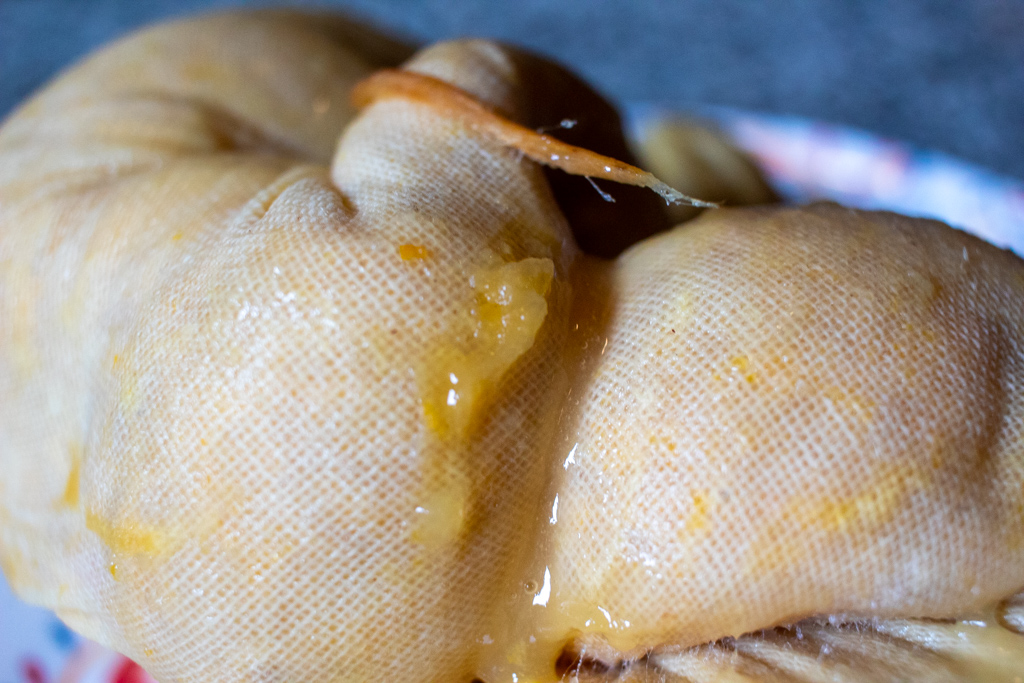
The final step includes adding sugar–a 50/50 mix of both refined white sugar and light muscovado sugar–and bringing the marmalade to its setting point, somewhere just north of the boiling point of water. Unfortunately the test for determining the setting point is not a direct temperature measurement but a procedure wherein a small but indeterminate amount of the marmalade is added to a chilled (but not to a precise temperature) plate and allowed to rest for a short but imprecise period (10 or 15 seconds), then pushed against with a finger to see if wrinkles appear in the surface.
The set testing process is fairly subjective and prone to human error, and of course where there is room for human error, I will find a way to make it. My marmalade set far beyond what was necessary for a spreadable jelly and into something approaching hard candy. The sugar caramelized beyond what is desirable for a marmalade into a dark brown with no trace of the original orangeish amber. The peels hardened into leather-like strips.


As cute as my little marmalade jars look, the contents are, sadly, inedible.
Attempt #3: The Road
With my hopes of making even a competent classic marmalade dashed, I turned to mail-order. From Amazon I was able to acquire 2 distinct versions of English marmalade, one of which was made in Oxford, the other in Cambridge. The classic English nerd rivalry! A head-to-head comparison was the obvious next step.
Unfortunately, work took a pretty big chunk out of my available sandwich time this month. I spent 10 days on the road, helping to rebuild datacenters in California and Honolulu, Hawaii. Poor me. I spent an entire week in Honolulu shutting back and forth between a noisy server room and a suite in a downtown highrise hotel.

Clearly, I had to bring the marmalade along with me. The sandwich life never sleeps.
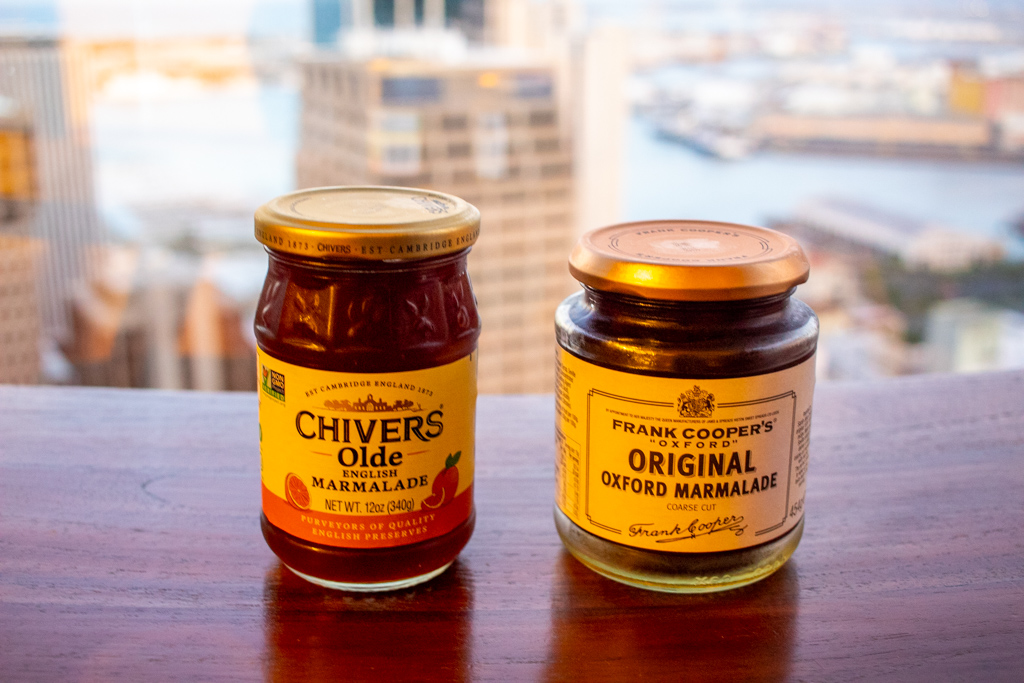
Once again, I started with plain squishy white bread, buttered.
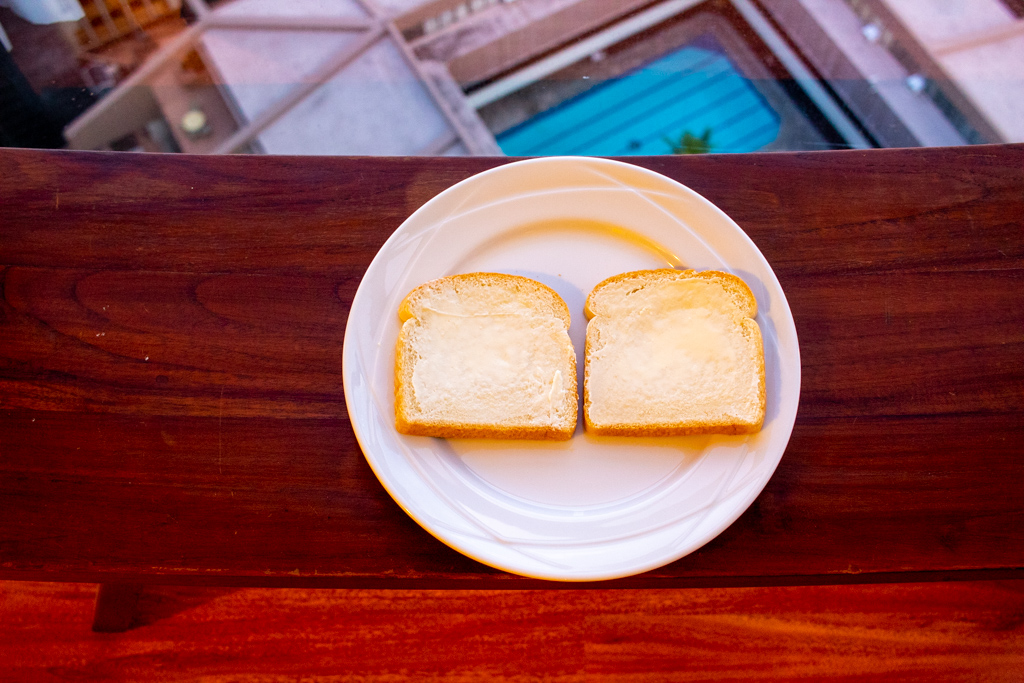
And then the marmalade. The Chivers was lighter-colored, with a more easily-spreadable consistency. The Frank Cooper’s brand was comparatively quite thick, gelatinous and dark and more difficult to spread.

Both seemed to enjoy the surroundings equally well though.

The Chivers had a brighter flavor as well, more tart/sweet, while the Frank Coopers had more bitter dark sugar/orange peel flavor to it.



If I had to choose one, I’d choose the Chivers. With an island full of interesting new (to me) things to eat though, I didn’t actually have to. On Oahu, I could get more interesting fare at the 7-11.
Spam musubis are life.
Epilogue: A Life Of Possibilities
It is possible that one day I will relate to you in full the many things both wondrous and ordinary I ate in Hawaii. There was a lot of good food there, and a lot more that I wasn’t able to get to in a week of shuttling back and forth between a hotel room and a datacenter. (OK yes, I also went on a couple of hikes)








Hawaii is an interesting and beautiful place that deserved more of my attention than I was able to give it in the week I was there. Still, I would be remiss if I did not recount to you at least in part one exceptional (and somewhat relevant) meal, and the possibilities that it revealed to me.
My colleagues Matt, Deniz, and I decided to splurge one evening in Honolulu and dine at The Pig & The Lady, a small but popular destination in Honolulu’s Chinatown doing a modern take on Vietnamese home cooking and Asian cuisine in general.
Since their menu changes frequently, we had high hopes but little idea of what to expect going in. Our waiter was able to steer us toward some delightful appetizers, such as a hamachi aguachile, a sort of very wet ceviche using sushi-grade raw hamachi in a mustard greens brine with cucumbers, tomatillos, radishes, lime juice, chilies and herbs. I could have drunk a pint of the brine, and the fish had a delightfully firm texture and fresh flavor.

He also helped us pick the grilled sea scallops, served on the half-shell in an intensely salty, spicy, buttery satay sauce.
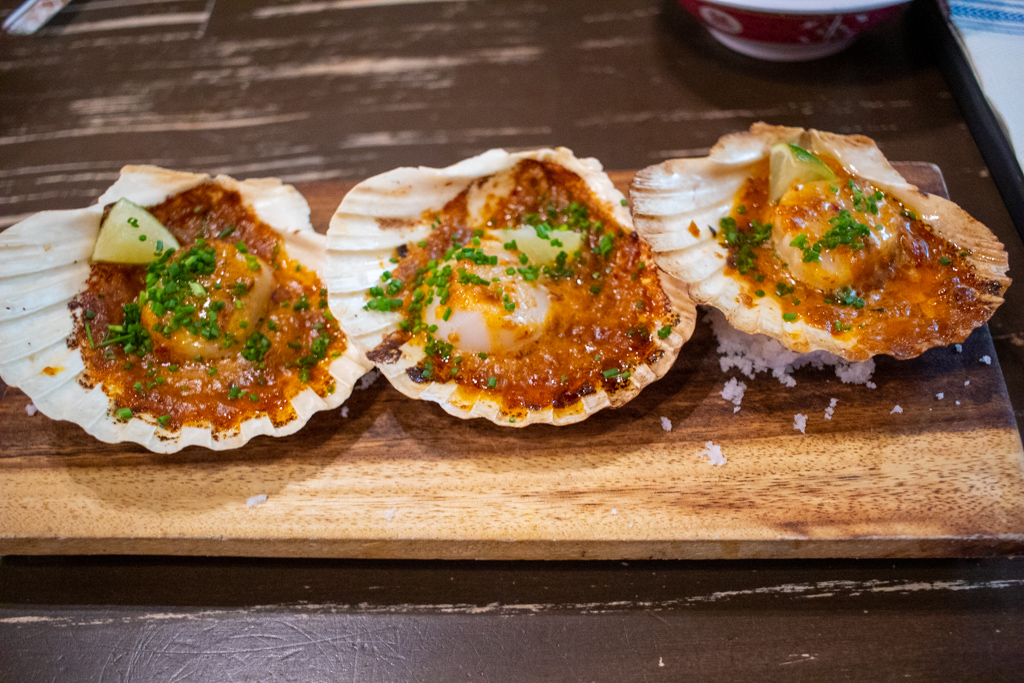
When it came to the entrees, our waiter had some suggestions as well. We shared a large bowl of The Pig & The Lady’s Pho 75, a bright and herbaceous noodle soup featuring brisket and rare thin-sliced beef, an iconic dish for which The Pig & The Lady is known.
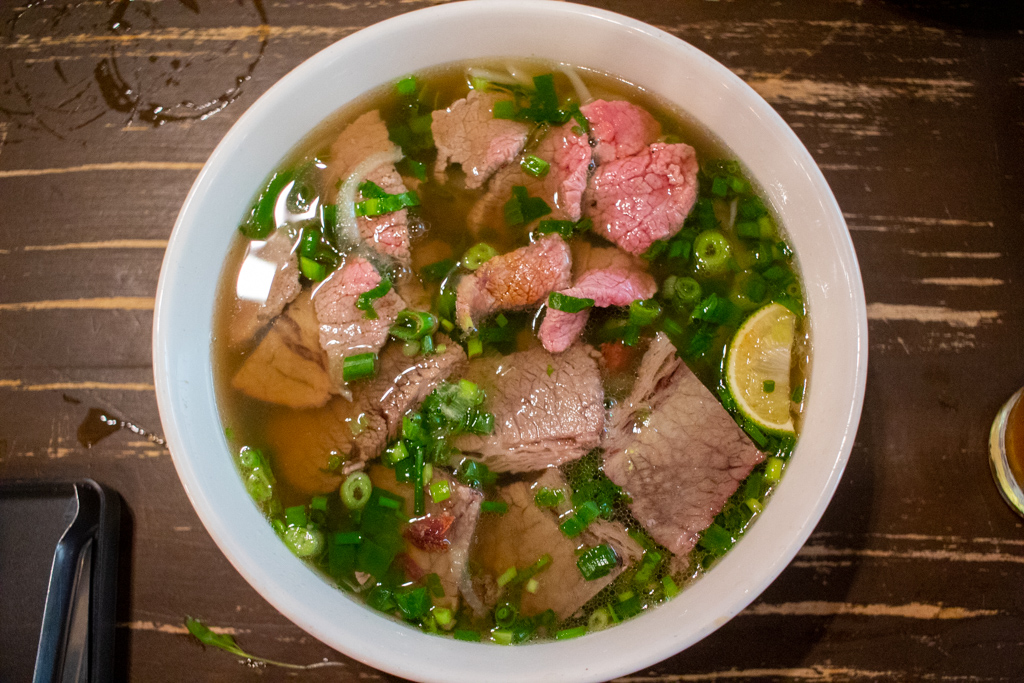
Additionally, we shared a large plate of glazed short ribs, served with lettuce, mint leaves, pickled julienne of carrots and daikon radish, jasmine rice, and both a sweet chili sauce and a savory garlic-and-chili paste for making small hand wraps.
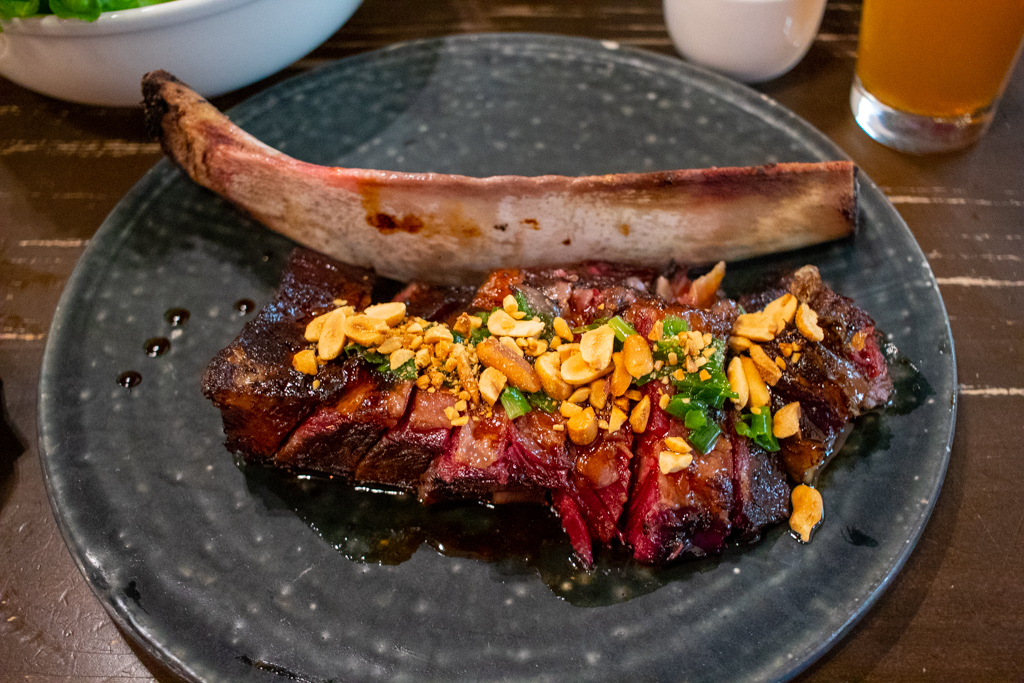
Many of these dishes were already on my radar as soon as I had the menu in my hand, but it was nice to have these selections confirmed by someone who knew the menu as intimately as our waiter. However, I also had to add another dish to our selection, one that wasn’t part of our waiter’s program. I wouldn’t say he steered us away from it; he just did not appear to have a strong opinion of the dish one way or another. Regardless, though I may not have noticed it right away the way I had a few other things on the menu–blame my aging eyes or my wandering brain, or the jet lag that stayed with me the entire week I was there–once I did see it, I knew I had to try it, or call the entire trip a waste.

Calamansi is a citrus fruit native to the Phillipines and other areas of Southeast Asia. It is used in beverages and marinades in the Phillipines, among other culinary applications. A Filipino waitress at another restaurant in Honolulu pointed out to us that calamansi juice is frequently mixed with patis (fish sauce) and chili peppers to make a common table condiment there also. (She in fact said that it would be delicious on the laulau pork I’d ordered. I asked why she hadn’t brought me any then. She laughed genuinely–nearly everyone I met in Hawaii was similarly laid back and possessed of good humor.)

The Pig & The Lady’s calamansi marmalade was not entirely without bitterness, though the balance was not tilted as heavily that direction as with many I’d tried–the tartness of the calamansi and the sweetness of the added sugar brightened it considerably.
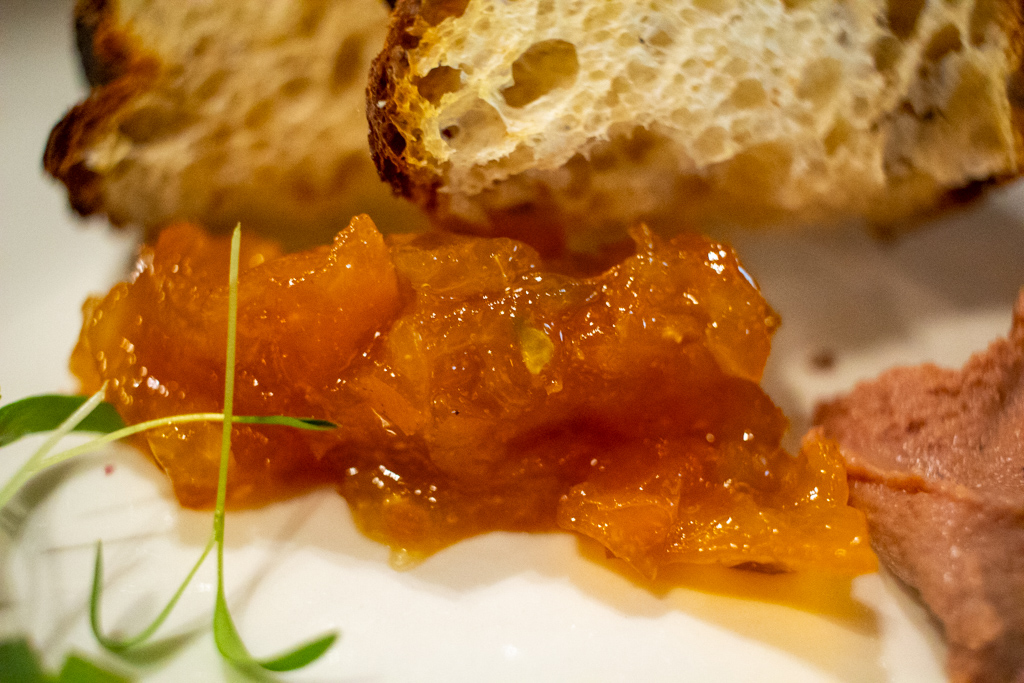
The chicken liver pâté itself was very smooth, without much of the iron-like flavor that I think of as being typically “livery,” and more highly seasoned (read:saltier, but not in an unpleasant way) than many I’ve had (or made myself).
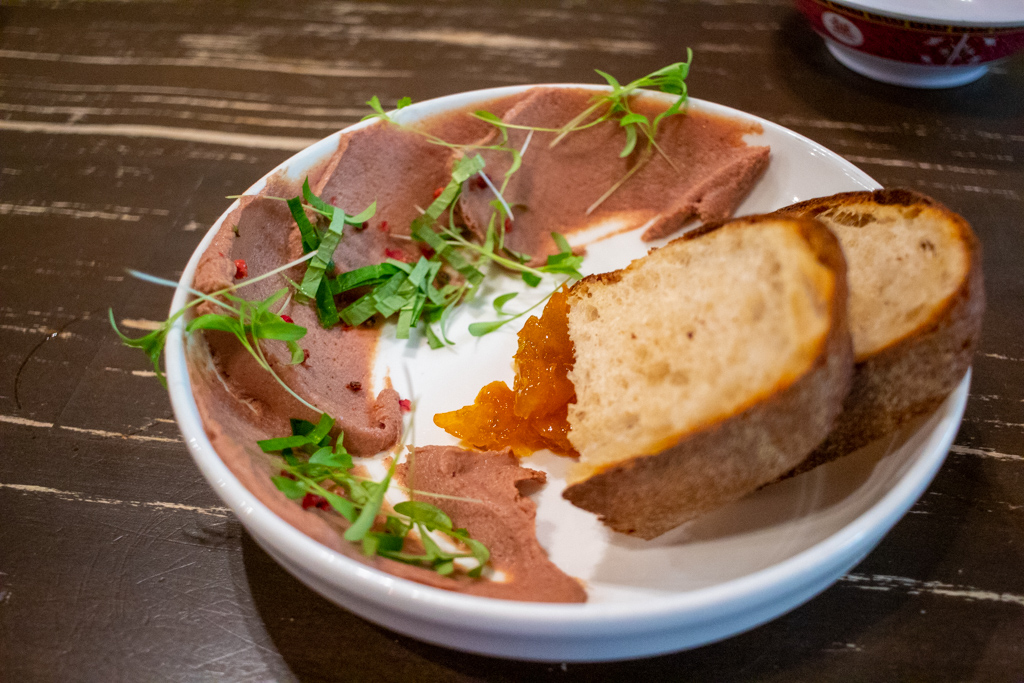
Between the sweet/sour/bitter of the marmalade and the salty/umami flavor of the pâté, this dish had every taste bud targeted in one way or another. The Vietnamese coriander leaves and the pink peppercorns then combined to give it an additional citrusy/floral/peppery note that had me briefly wondering if the chef had snuck in some sichuan peppercorns. The bread was also quite good, lightly toasted, and while the two slices included did not provide quite enough real estate for all that pâté, I was happy enough to go after it with a spoon once the bread was depleted.
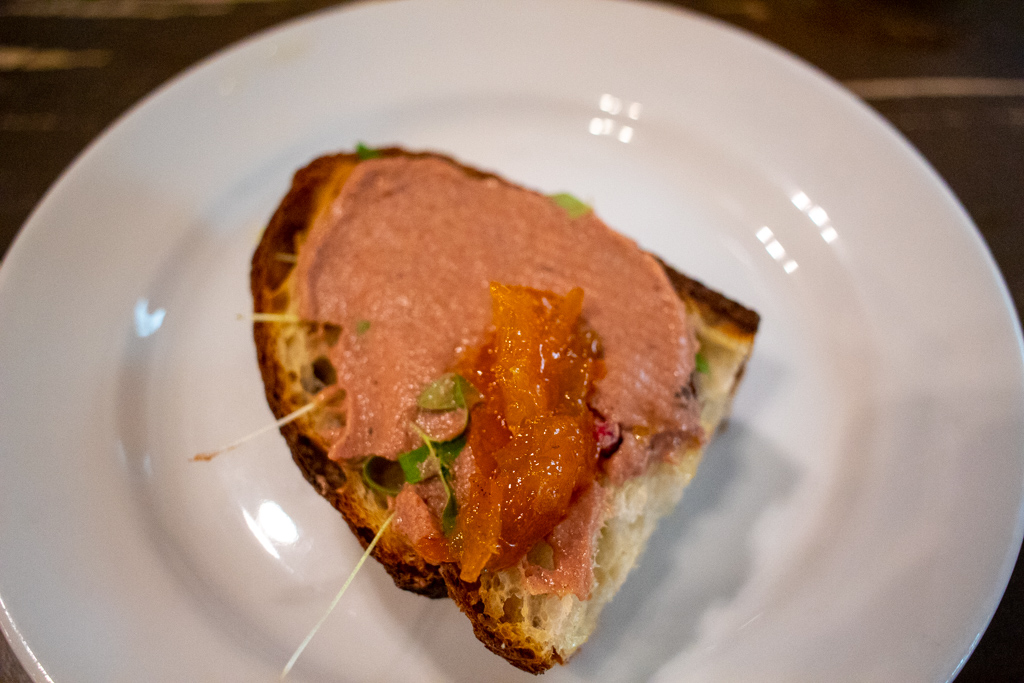
So is it possible that adding something savory was what I needed all along in order to appreciate marmalade? I’m not sure, but I’m willing to do some experimentation to learn more. I’m fresh out of pâté at home, but I have plenty of pork liver still in the freezer from when I made some in May and I’m happy to replenish my supply. I’m also interested in exploring Crit’s suggestion of eating marmalade with cheese. For the first time since I started trying marmalade this month, I’m excited by the possibilities.
How about you? How do you like your marmalade sandwiches? Bread soft or toasted? Plain marmalade and bread? Do you add butter, or cheese, or any other interesting or unheard of ingredients you like to add? Please tell us all about your favorite ways to eat marmalade!

I like sandwiches.
I like a lot of other things too but sandwiches are pretty great


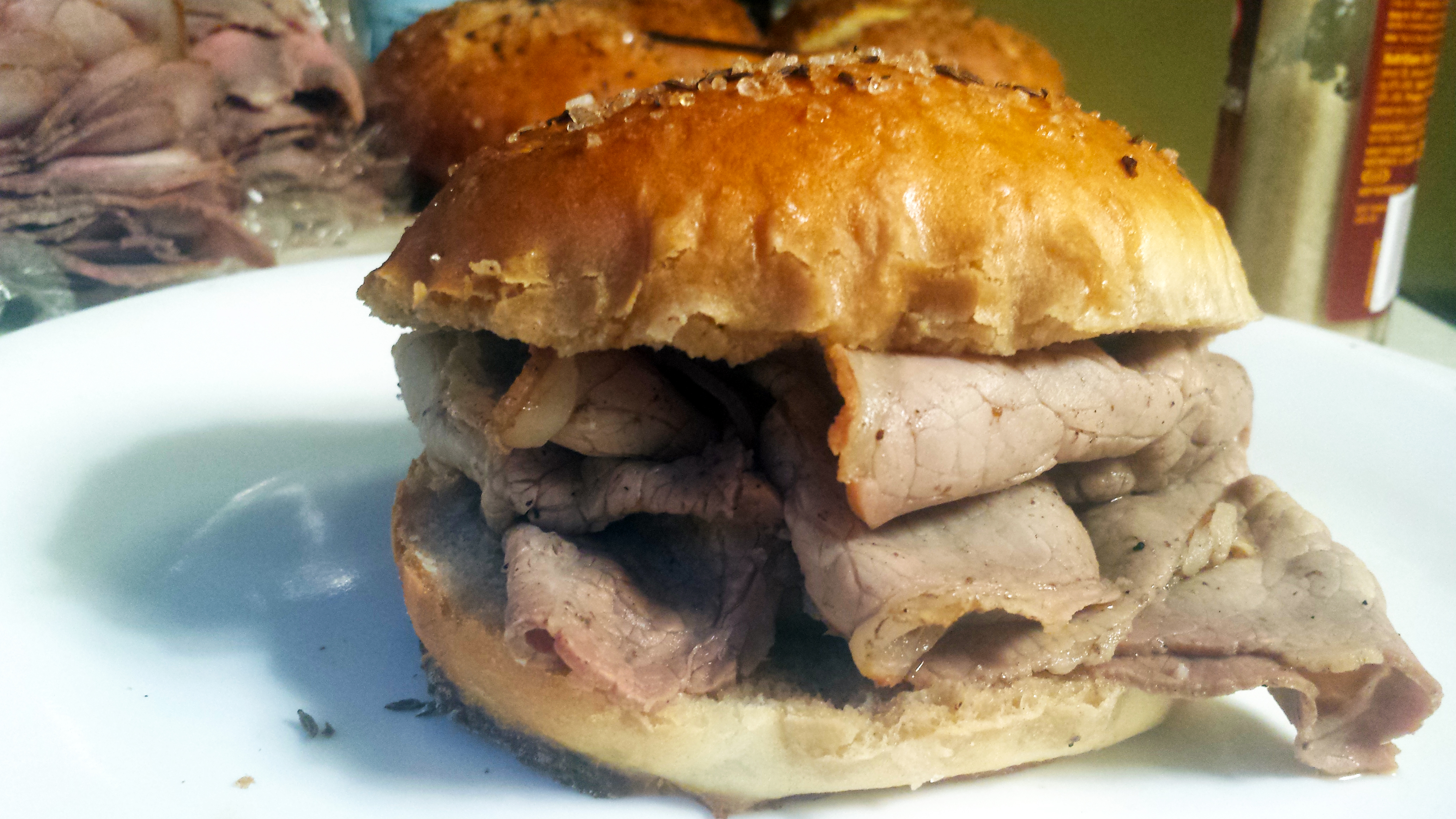
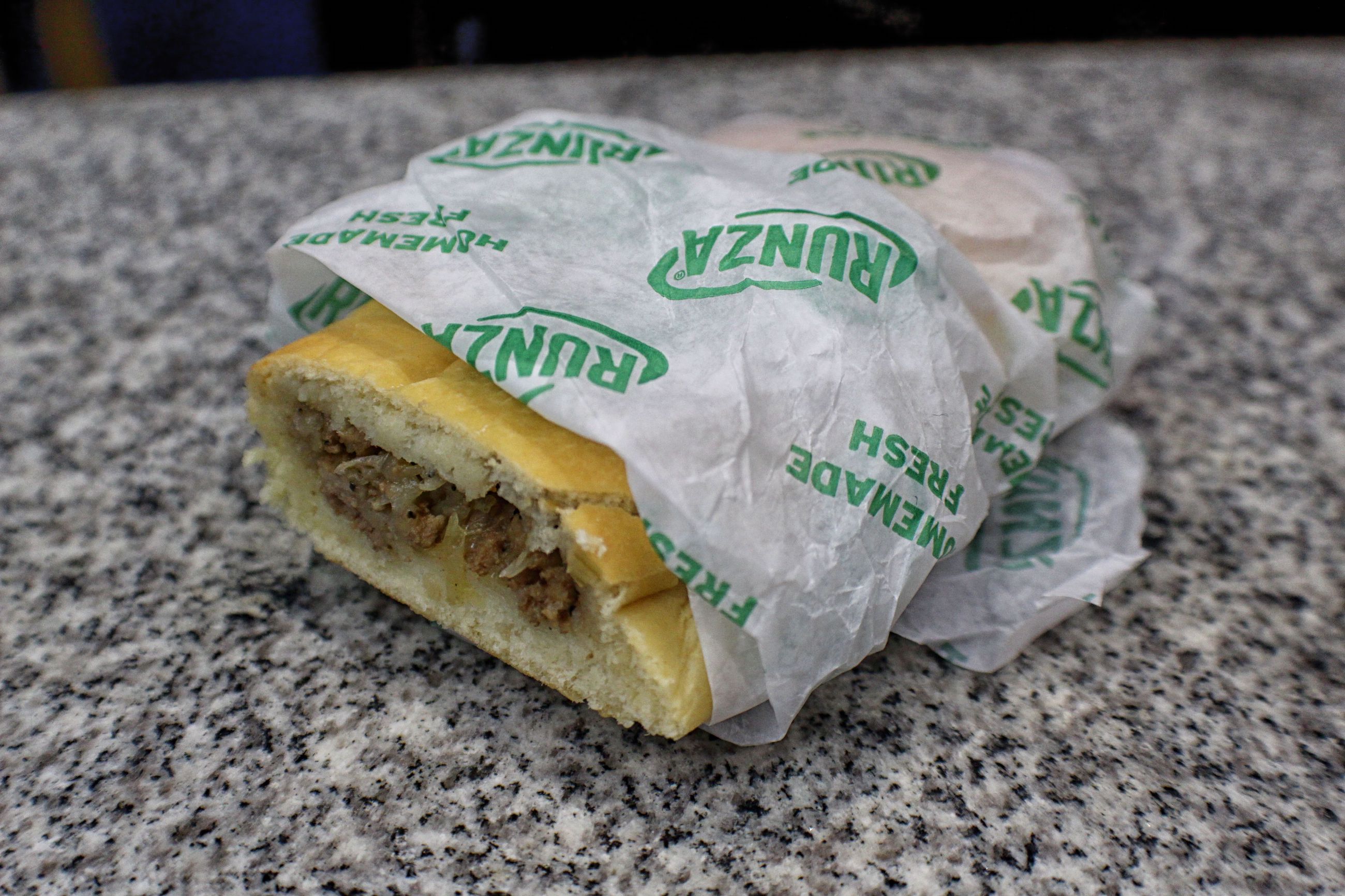

I’ve been a rabid Anglofile since I was a small child, and I forced myself to like marmalade at an early age because of the Paddington books. It actually worked, and I enjoy it more or less. I will try it with cheese next time, since cheese makes everything better (even Christmas cake)!
Cheese and mango chutney is a good combination so I think cheese and marmalade would work.
I’m not the biggest marmalade fan though my
Mum makes a good 20 or so jars every year. I’m familiar with the chilled plate test (it went in the freezer to chill at the start of the boiling up process).
Sorry, but I think that you using a mode of marmalade consumption only ever favoured by a single fictional children’s book character was an experiment doomed. Toast, man! Maybe a sourdough, with butter. And a black coffee with it, because marmalade is pretty sweet.
These rather dark and over-cooked looking exports you’re buying are, I suggest, not typical. Keep an eye out for lighter stuff. You need to try a simple, pleasant, home style of marmalade. You’ll find my recipe over in the comments on Crit’s post.
I’m from New Zealand. Like the US, we have a British colonial past. So – do people of the US NOT put butter in their sandwiches? Whaaat?! How do you insulate the filling from contaminating the bread as it sits in your lunchbox, while you work your way towards a break?